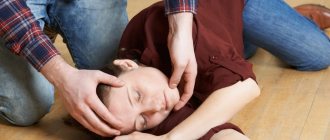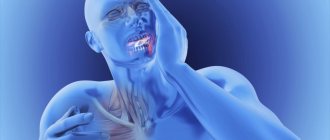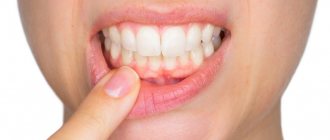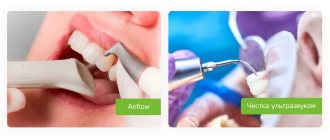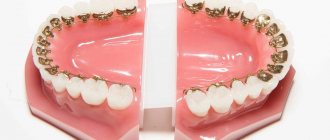Do you often wake up with small sores on your tongue or cheeks? Do you observe the formation of small bumps on the soft tissues in your mouth after eating? In this case, we can talk not about a bad habit, but about the possible development of a chronic disease. Don’t understand why constant cheek biting requires consultation with a specialist, and don’t believe in the serious consequences of ignoring the problem? But in vain, according to statistics, frequent, chronic injuries to the mucous membrane can become a factor in the development of precancerous diseases. In addition to the loss of the aesthetic appearance of the tongue and cheeks, they threaten to deteriorate their overall health.
general information
Epilepsy attacks have been known to people for a very long time. It was either mistaken for demonic possession or associated with a person’s special talent. Today, one or another form of pathology is observed in 10 people out of 1000. Symptoms can occur in newborns and the elderly, in men and women with the same frequency. Moreover, similar processes occur in the central nervous system of some animals, for example, dogs.
The main mechanism for the occurrence of attacks is the synchronization of the work of all nerve cells in a certain area. It is called an epileptogenic focus and determines the set of symptoms and their severity. Contrary to popular belief, the disease is not limited to seizures with loss of consciousness. There are a large number of variants of seizures with varied symptoms, depending on the area of the brain in which the pathological focus occurs.
Make an appointment
Habit of biting your tongue
Habits are things that we stick to all the time and that can be very difficult to break. For some people, persistent tongue biting is nothing more than a result of developing a tongue-biting habit. This is usually caused by anxiety, fear, stress and other emotions that cause many vivid experiences.
If you constantly bite your tongue, you may have developed an involuntary tongue-biting habit that you need to break. Effective treatment in this situation will likely require cognitive-behavioral psychotherapies as well as habit change techniques. And the help of a qualified psychotherapist can help you completely get rid of this problem.
Causes
The functioning of the brain is a complex process that requires the constant interaction of many structures. A failure at any level can cause the formation of an epileptogenic focus. Among the most common causes of epilepsy in adults and children are:
- heredity;
- traumatic brain injuries;
- acute or chronic intoxication, especially alcoholism;
- infectious lesions of the brain or its membranes (encephalitis, meningitis);
- acute and chronic cerebrovascular accidents, including strokes;
- malignant and benign tumors in the cranial cavity;
- birth injuries;
- parasites that develop in brain structures: echinococcus, pork tapeworm;
- neurodegenerative diseases (Alzheimer's disease, multiple sclerosis, Pick's disease);
- hormonal imbalances, especially lack of testosterone;
- metabolic disorders, etc.
There are cases when the cause of epilepsy cannot be identified. In this case, the disease is called idiopathic.
What is prohibited
After an injury it is prohibited:
- treat damage with solutions containing alcohol;
- drink water immediately after treatment.
During the recovery period, it is important to take care of your oral cavity. Necessary:
- do not eat spicy or sour foods;
- limit the ingress of food onto the damaged side;
- Do not abuse cold or hot drinks.
It is forbidden to touch the damaged area with your fingers or remove the protective protein layer that forms.
Types and symptoms
Epilepsy is multifaceted and multifaceted; its symptoms are not limited to seizures. The most common classification is depending on the severity of attacks and their main manifestations.
Aura (harbingers)
Many epileptic seizures begin with an aura. This is the name given to a complex of specific sensations that occurs shortly before a seizure. Manifestations of an aura can be completely different: paresthesia (pathological sensations), a specific taste in the mouth, auditory, visual or olfactory hallucinations, etc. Before the appearance of an aura, a person often begins to experience causeless anxiety and internal tension.
Partial (focal) seizures
These conditions occur when a small area of the brain is involved in pathological overexcitation.
Simple partial seizures are characterized by preserved consciousness and last only 1-2 minutes. Depending on the location of the pathological focus, a person feels:
- sudden change of mood for no apparent reason;
- small twitching in a certain part of the body;
- feeling of déjà vu;
- hallucinations: lights before the eyes, strange sounds, etc.;
- paresthesia: a feeling of tingling or crawling in any part of the body;
- difficulty pronouncing or understanding words;
- nausea;
- change in heart rate, etc.
Complex attacks are characterized by more severe symptoms and often affect consciousness and thinking. Human can:
- lose consciousness for 1-2 minutes;
- there is no point in looking into emptiness;
- scream, cry, laugh for no apparent reason;
- constantly repeat any words or actions (chewing, walking in a circle, etc.).
Typically, during a complex seizure and for some time after it, the patient remains disoriented for some time.
Generalized seizures
Generalized seizures are one of the classic signs of epilepsy that almost everyone has heard of. They occur if the epileptogenic focus has spread to the entire brain. There are several forms of seizures.
- Tonic convulsions. The muscles of most of the body (especially the back and limbs) simultaneously contract (come to tone), remain in this state for 10-20 seconds and then relax. Such attacks often occur during sleep and are not accompanied by loss of consciousness.
- Clonic convulsions. Rarely occur in isolation from other types of attacks. Manifested by rhythmic rapid contraction and relaxation of muscles. The movement cannot be stopped or delayed.
- Tonic-clonic seizures. This type of attack is called grand mal, which means “great illness” in French. The attack is divided into several phases: precursors (aura);
- tonic convulsions (20-60 seconds): the muscles become very tense, the person screams and falls; at this time his breathing stops, his face becomes bluish, and his body arches;
- clonic convulsions (2-5 minutes): the muscles of the body begin to contract rhythmically, the person thrashes on the floor, foam is released from the mouth, often mixed with blood due to a bitten tongue;
- relaxation: convulsions stop, muscles relax, involuntary urination or defecation often occurs; consciousness is absent for 15-30 minutes.
After the end of a generalized seizure, a person remains for 1-2 days feeling overwhelmed, problems with coordination of movements and fine motor skills. They are associated with cerebral hypoxia.
- Atonic attacks. They are characterized by short-term muscle relaxation, accompanied by loss of consciousness and falling. The attack lasts literally 10-15 seconds, but after it ends the patient does not remember anything.
- Myoclonic seizures. They manifest themselves as rapid twitching of the muscles of individual parts of the body, usually the arms or legs. The seizure is not accompanied by loss of consciousness.
- Absence seizures. The second name for attacks is petit mal (minor illness). This symptom of epilepsy occurs more often in children than in adults and is characterized by a short-term loss of consciousness. The patient freezes in place, looks into emptiness, does not perceive speech addressed to him and does not react to it. The condition is often accompanied by involuntary blinking of the eyes, small movements of the hands or jaws. The duration of the attack is 10-20 seconds.
Pediatric epilepsy
Childhood epilepsy has many masks. In newborns, it can be manifested by periodic muscle contractions that do not resemble seizures, frequent tilting of the head back, poor sleep and general restlessness. Older children may suffer from classic seizures and absence seizures. Partial seizures most often occur:
- severe headaches, nausea, vomiting;
- short periods of speech disorder (the child cannot utter a single word);
- nightmares followed by screams and hysterics;
- sleepwalking, etc.
These symptoms are not always a sign of epilepsy, but they should serve as a reason for an urgent visit to the doctor and a full examination.
Signs of Bruxism
An episode of nighttime teeth grinding lasts about 10 seconds. The number of episodes may vary and they may occur every night or occasionally. A characteristic symptom is grinding or clicking of teeth, but the patient himself rarely notices this feature, because sleep is not interrupted. Usually the patient learns about the problem from the lips of relatives and people living with him.
Associated symptoms of bruxism are the following:
- pain in the jaw, teeth;
- headache;
- pain in the facial muscles;
- dizziness;
- drowsiness.
Diagnostics
Neurologists diagnose and treat epilepsy. Some of them specifically expand their qualifications in this area, which allows them to act even more effectively.
Examination of a patient with suspected epilepsy includes the following methods:
- collection of complaints and medical history: the doctor asks the patient in detail about the symptoms that bother him, finds out the time and circumstances of their occurrence; a characteristic sign of epilepsy is the appearance of seizures against the background of sharp sounds, bright or flashing lights, etc.; special attention is paid to heredity, past injuries and diseases, the patient’s lifestyle and bad habits;
- neurological examination: the doctor evaluates muscle strength, skin sensitivity, severity and symmetrical reflexes;
- EEG (electroencephalography): a procedure for recording the electrical activity of the brain, allowing one to see the characteristic activity of an epileptogenic focus; if necessary, the doctor may try to provoke overexcitation using flashes of light or rhythmic sounds;
- MRI of the brain: makes it possible to identify pathological areas and formations: tumors, fissures, ischemic areas, consequences of a stroke, etc.;
- angiography of the vessels of the head: injection of a contrast agent into the blood followed by radiography; allows you to see areas of vasoconstriction and deterioration of blood flow;
- Ultrasound of the brain (Echo-encephalogram): used in children of the first year of life whose fontanel has not yet closed; visualizes tumors and other space-occupying formations, fluid accumulation, etc.;
- rheoencephalography: measurement of electrical resistance of head tissue, which can be used to diagnose blood flow disorders;
- general examinations: general blood and urine tests, blood biochemistry, tests for infections, ECG, etc. for a comprehensive assessment of the patient’s condition;
- consultations with specialized specialists: neurosurgeon, toxicologist, narcologist, psychiatrist, etc. (prescribed depending on the suspected cause of the attacks).
The list of studies may vary depending on the patient’s age, type of attack, presence of chronic pathologies and other factors.
Treatment of epilepsy
Treatment is a long and complex process. Even with the correct selection of medications and the complete absence of any manifestations for a long time, doctors only talk about stable remission, but not about complete elimination of the disease. The basis of therapy is medications:
- anticonvulsants (phenobarbital, clonazepam, lamotrigine, depakine and others): taken continuously to prevent seizures;
- tranquilizers (phenazepam, diazepam): eliminate anxiety and relax the body;
- neuroleptics (aminazine): reduce the excitability of the nervous system;
- nootropics (piracetam, mexidol, picamilon): improve metabolism in the brain, stimulate blood circulation, etc.;
- Diuretics (furosemide): used immediately after a seizure to relieve swelling in the brain.
If necessary, the doctor may prescribe other groups of drugs.
If medications are not effective enough, doctors may resort to surgery. The choice of a specific operation depends on the location of the pathological focus and the form of the disease:
- removal of a pathological formation (tumor, hematoma, abscess) that caused the attacks;
- lobectomy: excision of the area of the brain in which the epileptogenic focus occurs, usually the temporal lobe;
- multiple subpial transsection: used when the lesion is large or cannot be removed; the doctor makes small incisions in the brain tissue that stop the spread of excitation;
- callosotomy: dissection of the corpus callosum, which connects both hemispheres of the brain; used for extremely severe forms of the disease;
- hemispherotopia, hemispherectomy: removal of half of the cerebral cortex; the intervention is used extremely rarely and only in children under 13 years of age due to the significant potential for recovery;
- installation of a vagus nerve stimulator: the device constantly stimulates the vagus nerve, which has a calming effect on the nervous system and the entire body.
If indicated, osteopathy, acupuncture and herbal medicine can be used, but only as a supplement to the main treatment.
Make an appointment
Cost of services
| Appointment with a dentist | 260 rub. |
| Grinding and polishing of teeth | 990 rub. |
| Mouthguard for bruxism (1 jaw) | RUB 5,350 |
| Aligners | from 20,000 rub. |
| Bracket system | from 29,150 rub. |
| Tooth extraction, simple | 2,900 rub. |
| Wisdom tooth removal | 7,250 rub. |
| Tooth restoration | RUB 4,950 |
Complications
The most serious complication of epilepsy is status epilepticus. This condition is characterized by consecutive attacks of convulsions, between which the person does not come to his senses. This condition requires emergency medical attention due to the high risk of cerebral edema, respiratory arrest and palpitations.
A sudden onset of epilepsy can cause a fall and injury. In addition, frequent attacks and lack of quality treatment leads to a gradual deterioration of mental activity and personality degradation (epileptic encephalopathy). This is especially true for alcoholic epilepsy.
First aid for an attack
If a person has developed a classic attack of epilepsy with loss of consciousness, tonic and clonic convulsions, those around them should:
- If possible, prevent injury from falling;
- lay the patient on his side;
- Carefully hold your head during convulsions.
It is strictly forbidden to place spoons, pencils and other hard objects in the patient’s mouth to avoid biting the tongue!
If the convulsions do not stop, or the attacks follow one after another, you must urgently call an ambulance.
When to go to the doctor
It may seem to some that biting your tongue in your sleep is a trifle that does not even deserve special attention, not to mention medical help. Of course, this is not a fatal injury, but in some cases it is simply necessary to see a doctor. Consultation with a specialist is needed if:
- a through wound has formed on the tongue, requiring sutures;
- swelling or hematoma appears at the site of the bite;
- bleeding does not stop within half an hour;
- the wound size exceeds 5 mm and has ragged edges;
- pain and discomfort continue to bother you for several days in a row, although the damage itself appears to be shallow.
If measures are not taken in time, serious health problems cannot be avoided. Injuries in the area of the tongue and the inner surface of the cheeks can provoke an infectious process that will affect the entire oral cavity and create the preconditions for the appearance of numerous ulcers on the mucous membrane or one of the forms of stomatitis.
Prevention and diet
Prevention of epilepsy is a healthy lifestyle. Doctors recommend:
- avoid stress and overwork;
- promptly treat any infections and inflammatory processes, including caries;
- minimize (or better yet, completely eliminate) intoxication, including alcohol and smoking;
- maintain body mass index within normal limits;
- regularly engage in sports at an amateur level, take more walks;
- get enough sleep and rest.
The diet for already diagnosed epilepsy, as well as an increased risk of its development, should comply with the principles of proper nutrition:
- sufficient quantity and correct balance of macro- and micronutrients (vitamins, minerals), as well as water;
- fractional meals in small portions;
- exclusion or sharp reduction of spices, coffee, black tea, carbonated drinks, etc.
Some forms of epilepsy can be corrected using a ketogenic diet, characterized by a minimum amount of carbohydrates, a medium amount of protein and a high amount of fat (up to 80% of all calories). The transition to this style of nutrition should only be carried out with the permission of a doctor and take place under his strict supervision.
Advantages of the clinic
The Health Energy Clinic works to make quality medical care accessible to everyone. Our advantages are:
- doctors of various specialties who regularly improve their knowledge and skills;
- modern diagnostic equipment;
- the whole range of laboratory tests;
- comprehensive health screening programs;
- individual approach to the selection of therapy;
- own day hospital;
- affordable prices for all services.
Epilepsy is a disease that forces a person to live in constant fear of a new attack. Take control of your illness and sign up for Health Energy.


